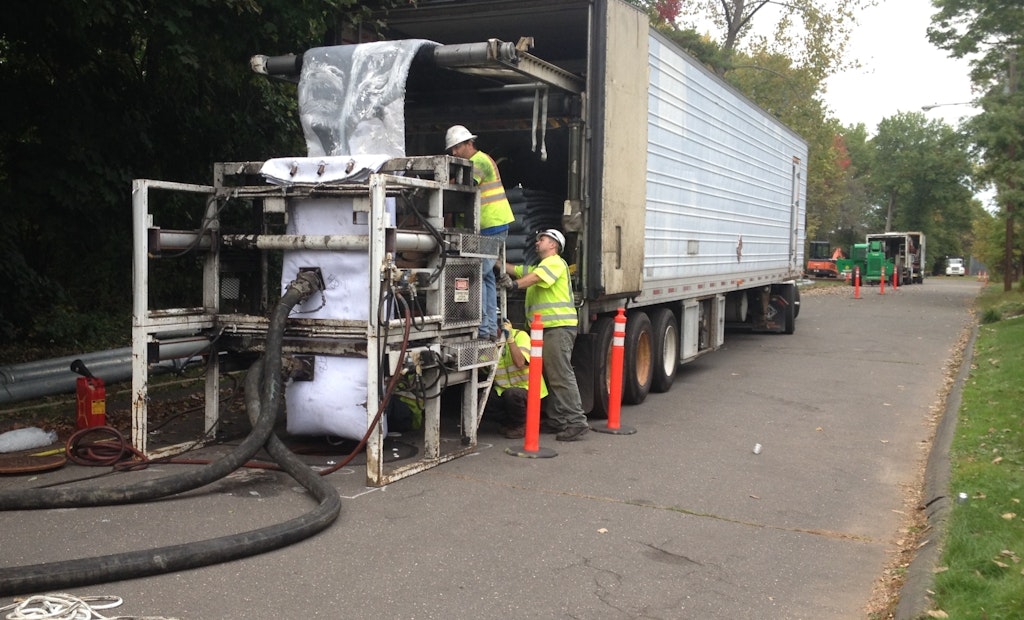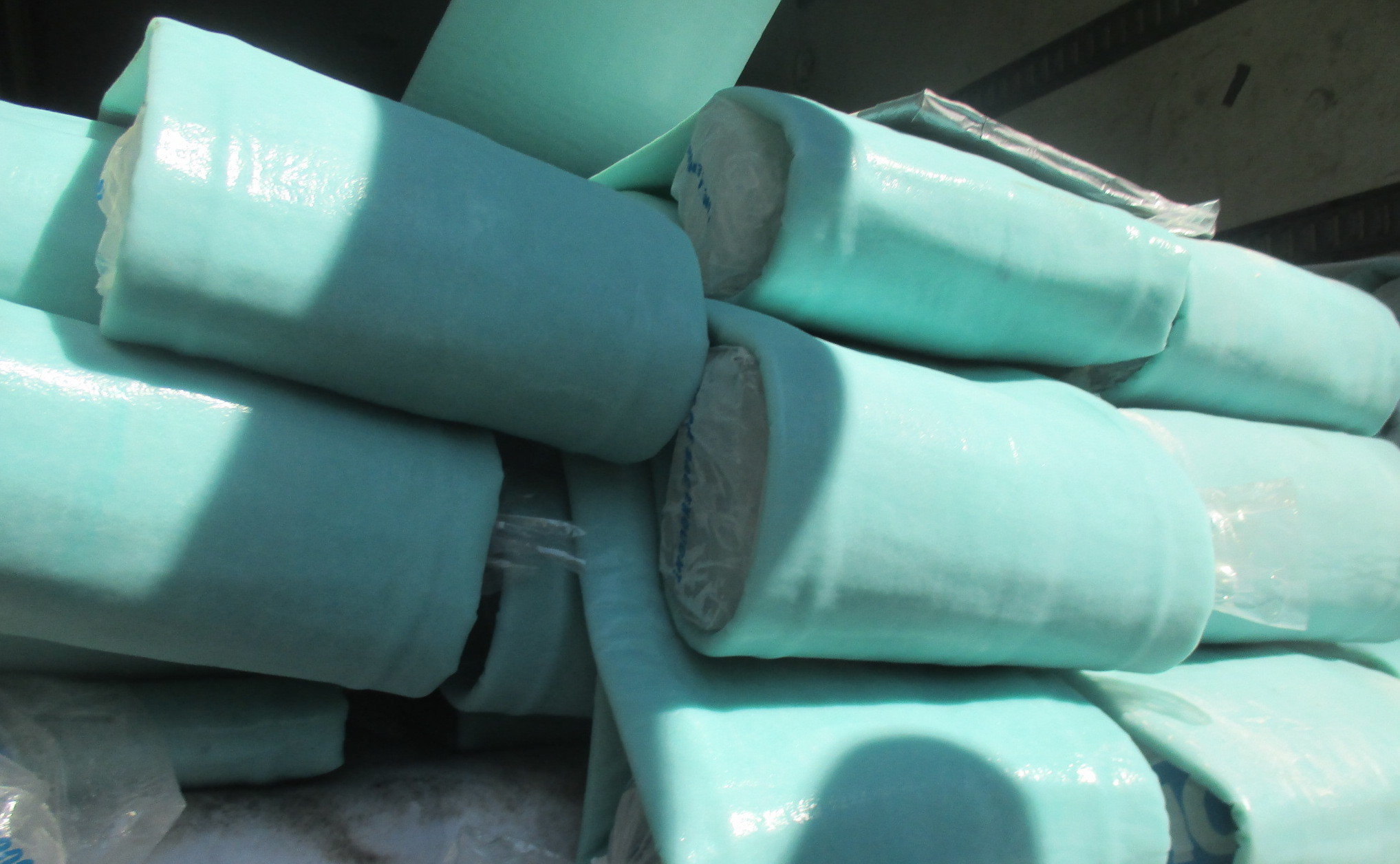
Fed up with the accumulating expenses of reacting to sewer line breaks, the city of Lawrence (Massachusetts) Water and Sewer Department is taking a proactive approach to its cured-in-place pipe rehabilitation work.
Interested in Infrastructure?
Get Infrastructure articles, news and videos right in your inbox! Sign up now.
Infrastructure + Get AlertsFor too long, the city of Lawrence (Massachusetts) Water and Sewer Department took a strictly reactive approach when it came to sanitary sewer infrastructure repairs.
“We would only embark on an infrastructure project when something completely failed, collapsed and started causing backups, which was very costly for the city,” says Brian Peña, acting director of Public Works.
With many of the pipes about to reach their 100-year mark, the city needed a drastic change. It turned to engineering and consulting firm Woodard & Curran to help find a solution.
A holistic approach
The first step in Woodard & Curran’s plan was a sanitary sewer evaluation survey — the first such survey performed in Lawrence in a very long time. The survey included flow isolation, manhole inspections, CCTV inspection, building inspections, and dye flooding and testing.
Data pulled from the survey allowed Woodard & Curran to put together recommendations for rehabilitation and develop a strategy around future proactive investigations.
Justin deMello, project manager at Woodard & Curran, says most municipalities don’t like to invest money in this type of holistic approach, but not only is it cheaper than on-call replacements, it’s far less invasive to the community.
For repairs where opencut work wasn’t necessary, Woodard & Curran recommended the cured-in-place pipe method for an average cost of $100 per foot compared to the $800 per foot the city had been paying for on-call excavation.
Not only was CIPP cheaper, but it was also far less disruptive, Peña says. In many cases, they were able to line the pipes while traffic continued in both directions. Production rates were significantly higher because workers could complete an entire section of pipe from manhole to manhole in a single day.
As an example of how much money the city of Lawrence saved with a proactive approach, deMello shared some figures in a paper presented at the North American Society for Trenchless Technology’s No-Dig Show in 2018. A 600-foot segment of 8-inch vitrified clay pipe showing signs of structural failure was rehabilitated using CIPP at $40.40 per linear foot.
The total cost of just under $25,000 included mobilization; bypass pumping; traffic management; installation of the liner; reinstatement of the service laterals, grouting laterals and pipe ends; and pre-, post- and 1-year warranty CCTV inspection of the pipe segment.
While a proactive CIPP approach was far cheaper in the long run than waiting for a failure, the work still had to be paid for, and the city of Lawrence wasn’t exactly swimming in money.
Tightening operations
According to July 2018 census records, the city of Lawrence is one of the most impoverished communities in Massachusetts, with a 24% poverty rate and a median per capita income of $18,069. Raising rates was something the city wanted to avoid, if at all possible.
To pay for the project, Woodard & Curran recommended going after the low-hanging fruit first. The city looked within and tightened up operations wherever possible. Next, it looked at where it was failing to capture revenue, and one answer became apparent: water meters.
Many of the city’s water meters were over 50 years old, and their accuracy had severely depleted. The plan was first to replace the large industrial and commercial meters, and then start replacing aging residential meters.
The city tapped into the State Revolving Fund tailored explicitly to water and wastewater projects and secured a 2% loan. Within the first year, the new meters were generating about $1 million in revenue.
“To put that in perspective, at that time, we had a $16 million budget,” Peña says.
Some residents were less excited about the accuracy of the new meters. Despite all the communication in advance of the switch, residents still thought the city had raised its rates.
Peña says he understood their frustration, but he noted that fate ended up being on the city’s side. The year the community was receiving higher water and sewer bills, the local economy started to recover. Unemployment was on the decline, and residents were getting back to work.
The treatment plant, with pumps that were 40 years old, also was tapped for savings. Not only were the pumps old, but they’d been installed when the plant had previously served two communities. These days, the service area is much smaller and resizing the pumps would realize even more savings.
To pay for new pumps and other equipment, the city of Lawrence paired those upgrades with a project to build a solar array at the plant. They were able to secure state financing at 2% interest and 10% principal forgiveness.
While the city still carries a debt service of about $60,000 for that project, between the electricity savings from the pumps, the electrical offset of about 30% to 35%, and the fact it’s now receiving solar renewable energy credits from the state, it is netting about $100,000 a year.
It’s not quite as dramatic as the meter upgrades, but Peña points out there were other benefits. “We ended up with five brand-new pumps and variable-frequency drives that would have had to be replaced regardless.”
That new equipment came at zero or minimal cost based on the credits and taking advantage of the available low-interest principal forgiveness loan.
A meticulously organized solution
With money in hand, a triage system was put in place to start the repairs on the pipe infrastructure. Woodard & Curran had a seven-year plan to investigate every piece of infrastructure in the community, but it quickly prioritized projects with the highest consequence of failure or likelihood of failure.
To maintain order and manage the complexity of the data, Woodard & Curran uses Innovyze InfoAsset Planner. The database is continuously updated as more data comes in and as projects are completed. Woodard & Curran is also coordinating with and gathering data from other city departments and utilities.
Working across city departments and other utilities is crucial, deMello says. Not only can you coordinate work being done in the same areas, but it’s also valuable for inspection purposes. You can share data between city departments and the gas and electric utilities, which saves everyone time and money.
According to the paper mentioned above, in the first three years of the project, the city has conducted over 300,000 feet of CCTV pipe inspection, 3,500 NASSCO Level I manhole inspections and 160,000 feet of smoke testing — and is well on its way to achieving its goal of inspecting the entire sewer system.
During that same time, the city spent approximately $1.9 million to assess, prioritize, design and rehabilitate nearly 11,000 feet of pipe using CIPP technologies. That same budget would have gotten them 2,500 feet of opencut repairs — which is 77% fewer rehabilitated pipes.
Unexpected benefits
In addition to alleviating infiltration in its sanitary sewers by taking a proactive approach with CIPP pipe rehabilitation, the survey yielded some unforeseen advantages related to inflow and infiltration.
At the same time the city was grappling with repairing its infrastructure, operators noticed that wastewater flows had nearly doubled over a short period of time. Woodard & Curran worked with the city and the Greater Lawrence Sanitary District wastewater treatment facility to narrow down where the infiltration was coming from.
A dye test and about five hours of patiently waiting for results revealed the culprit — an old deteriorated slide gate in one of the city’s canals. This one fix shaved about $500,000 per year off the city’s sanitary district payments, according to deMello. Dividing that among the city’s 12,000 customers, it equates to a much-needed savings of $42 per person and appreciative ratepayers.






